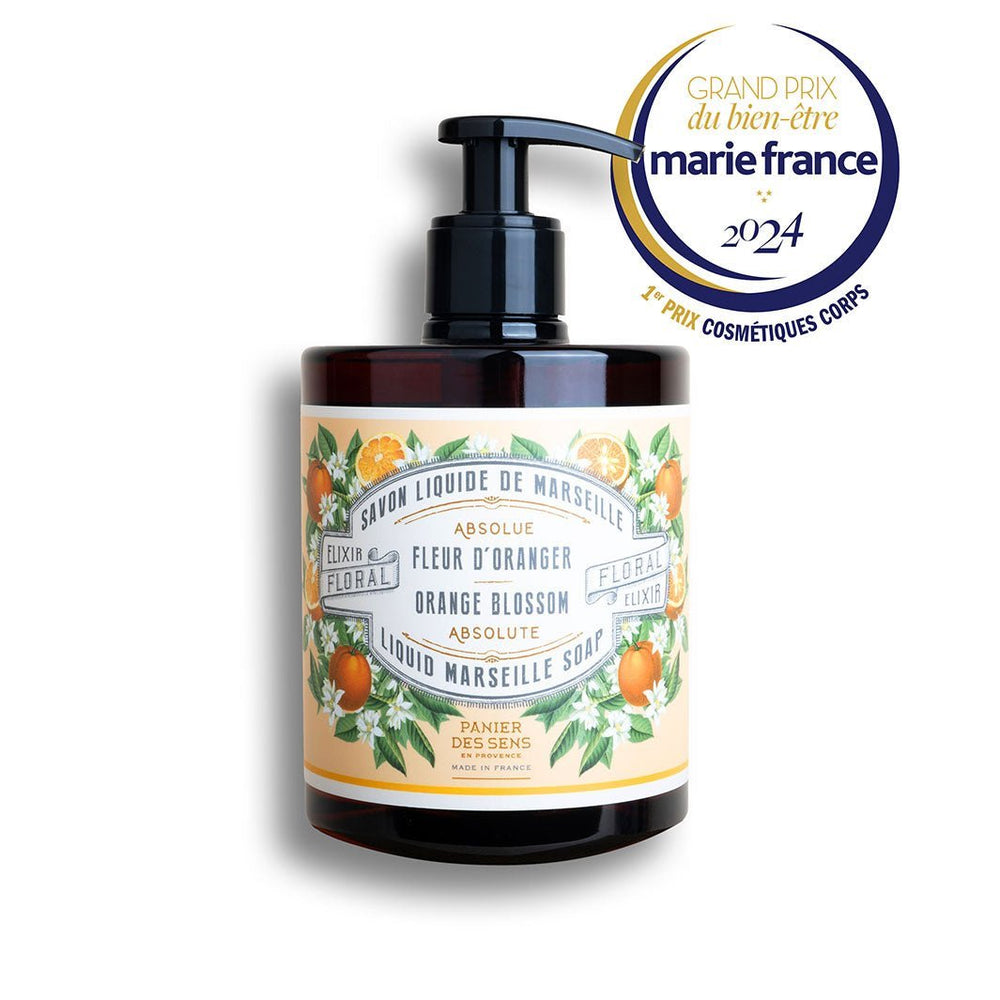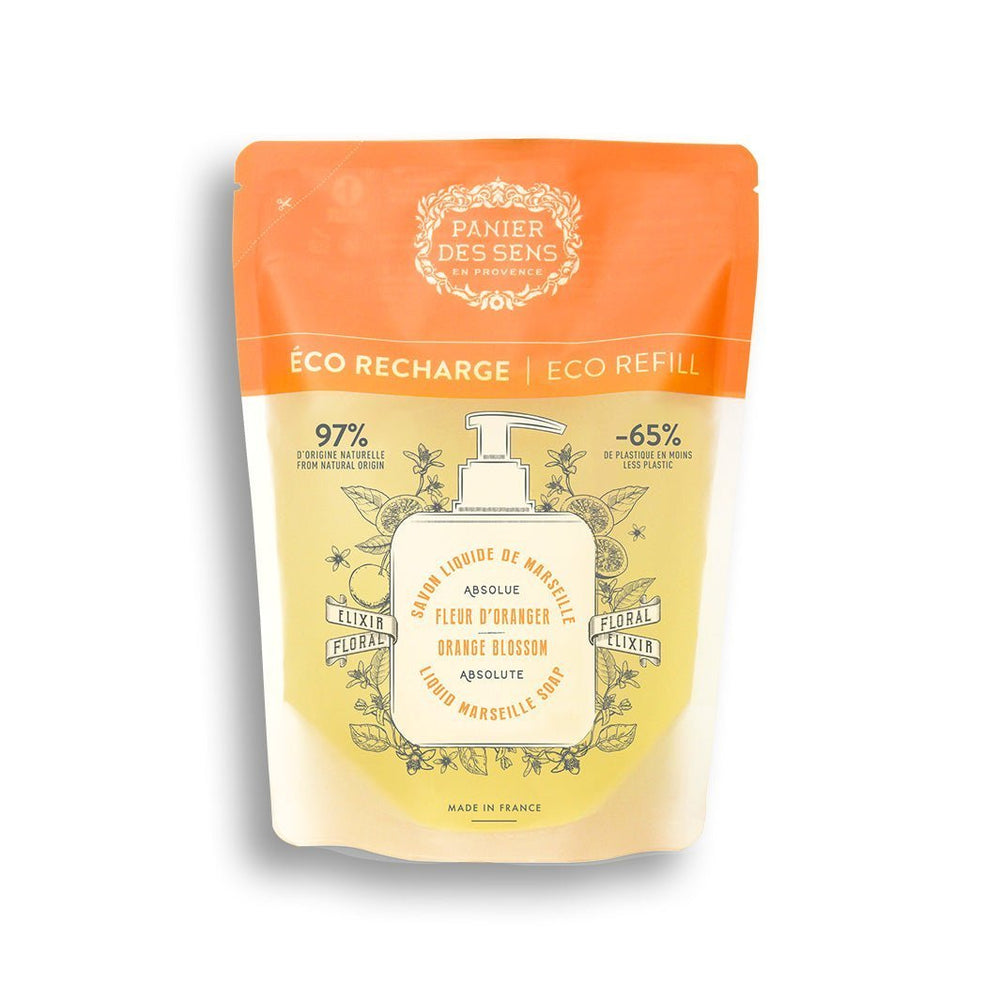The key ingredients of liquid Marseille soap
The authenticity of liquid Marseille soap lies in the simplicity of its composition and the rigor of its manufacturing methods. A true emblem of Provence, this soap is based on a stripped-down, natural formula, whose main ingredients are vegetable oils, potash and water. Combining tradition and quality, each ingredient is carefully selected to guarantee optimal texture and effectiveness, without altering the integrity of the skin.
Our exploration will begin behind the scenes of this traditional composition, where we'll shed light on the origins of the raw materials and how they bring this prized product to life. We then delve into the heart of the manufacturing process and learn how hot saponification, cooking and the blending of ingredients contribute to the formation of this gentle yet effective cleanser. Finally, we'll analyze modern variants, considering how the integration of organic ingredients or the replacement of certain traditional oils have shaped the new generation of liquid Marseille soaps, while taking a sustainable and ethical approach.

Any additives and fragrances
While liquid Marseille soap is praised for its minimalist composition, some manufacturers sometimes add fragrances or additives. These additions are made with respect for tradition, and aim to enrich the sensory experience without compromising the soap's original virtues. Natural essences, such as lavender or verbena, evoke the spirit of Provence, transporting the user to the heart of flowery fields under the Midi sun. However, these fragrances remain discreet and blend harmoniously with the basic formula.
In keeping with our ecological approach and concern for the skin's well-being, selected additives, such as vegetable glycerine, provide extra moisturizing and softness. These ingredients are rigorously selected for their quality and compatibility with the Marseille soap philosophy, which advocates a return to basics: simplicity, effectiveness and naturalness.
It's important to stress that these aromatic or enriched variants must not overshadow the very essence of Marseille soap: a pure product, devoid of superfluous chemical substances. So, when it comes to any additives or fragrances in your Liquid Marseille Soap, always opt for those whose origin is transparent and whose integration meets stricteco-responsibility criteria.
Manufacturing process and saponification
In the meticulous ballet of liquid Marseille soap creation, each stage of production is a dance between precision and tradition. The symphony begins with the cooking and mixing of ingredients, a crucial phase where vegetable oils meet potash under the watchful eye of the master soap-maker. This first act takes place in huge cauldrons, where high temperatures and constant agitation allow the raw materials to fuse into a homogeneous substance.
Cooking and mixing ingredients
This step is far from trivial; it requires ancestral know-how to achieve the perfect balance. Olive, copra and sometimes coconut oils are carefully poured into vats, before being heated to a specific temperature. At this precise moment, potash enters the scene to initiate the saponification reaction. The mixture is then stirred continuously, so that each oil molecule can unite with the soda and give rise to the soap.
Hot saponification
Once the components have amalgamated sufficiently, it's time for hot saponification. This alchemical reaction transforms the mixture into a thick paste, which is then washed to remove any residual traces of potash. There's no room for improvisation: the master soap-maker scrupulously oversees the process, adjusting time and temperature to guarantee a top-quality finished product.
Maturation and liquidification
Once these steps have been completed, it's time to rest: maturation. The soap paste rests patiently until it reaches its full cleansing capacity, while preserving its natural moisturizing qualities. Finally, this dense paste is diluted to obtain the much-appreciated liquid consistency: this is the final stage known as liquidification. Once again, this delicate stage requires the expert intervention of the soap-maker, who must ensure that the original properties of the soap are preserved as it crosses the liquid threshold.
And so ends this journey of craftsmanship, where every gesture counts and every element is respected. The result? An authentic liquid soap that gently cleanses without ever betraying its Provencal heritage or compromising its promise of impeccable hygiene.
Modern variants and their differences
Organic and ethical ingredients
The modern era has seen the emergence of a collective awareness of the environmental impact of our consumer choices. With this in mind, liquid Marseille soap has adapted and reinvented itself, incorporating organic and ethical ingredients. These new formulas give priority to oils from organic farming, guaranteeing the traceability and purity of raw materials. Respecting natural cycles in the extraction of these oils ensures a smaller ecological footprint, while preserving the nutritional qualities essential for our skin.
Alternatives to traditional oils
While olive, coprah and coconut oils form the fundamental trinity of traditional liquid Marseille soap, ecological concerns have led to the exploration of other plant-based alternatives. Oils such as sweet almond or wheat germ are appearing in modernized recipes, offering not only olfactory diversity but also distinct benefits in terms of skin hydration and soothing.
Preservatives and texture agents
The preservatives used in modern liquid soap are meticulously selected, with a constant concern for the balance between effective preservation and healthy formulation. Stabilizers such as EDTA (ethylene diamine tetra-acetic acid), often listed under various acronyms in the INCI (International Nomenclature of Cosmetic Ingredients) list, are rigorously scrutinized for their compliance with ecological standards. So, while necessary to guarantee product durability, these agents are part of a responsible approach aimed at minimizing their presence while ensuring soap quality and safety.
This move towards more virtuous practices affects not only the ingredients, but also the very process by which soap is made. Traditional methods, characterized by a long circuit during which patience and know-how are paramount, are gradually giving way to more efficient, continuous processes. These promise not only substantial time savings, but also a significant reduction in environmental impact thanks to optimized energy consumption.
In the end, these modern variants don't betray the original spirit of liquid Marseille soap; they simply give it a new impetus that meets today's demands without denying its ancestral heritage.
We recommend these other pages:






































